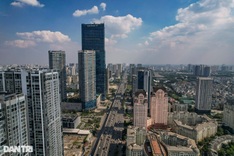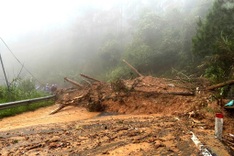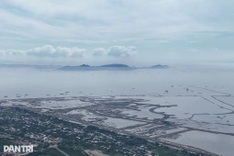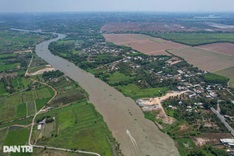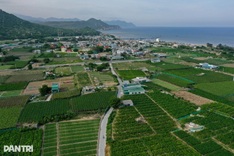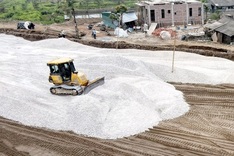
A flooded street in Vinh Hoi Ward, HCM City, after heavy rain on Saturday night. The city has proposed a USD 370 million canal dredging project to tackle worsening floods in its southern area
The city People’s Committee has submitted the proposal to the municipal People’s Council for review, calling it a critical effort to shield the fast-growing southern urban zone from repeated inundation.
The 7.4-kilometre canal, running from Doi Canal in former District 8 to Ba Lao Canal in former Binh Chanh District, would be fully dredged and reinforced with nearly 10 kilometres of embankments.
The project includes a new one-kilometre road, 12 to 18 metres wide, and construction of Ba Lon 2 Bridge across National Highway 50.
The total estimated cost is VND 9.23 trillion, with more than VND 6.6 trillion earmarked for land clearance and resettlement, about VND 2 trillion for construction, and the rest for consulting, management and contingency.
City planners say the canal is a key drainage route channelling stormwater from downtown to southern areas via Doi Canal under flood-control plan 1547.
Years of encroachment, illegal construction and waste dumping have clogged the waterway, especially between Ba Tang Bridge and Binh Dong Temple, creating serious bottlenecks during the rainy season.
If approved, work could begin soon and run through 2030.
Once completed, the project is expected to improve flood resilience, increase water retention and integrate with the nearly VND 10 trillion tide-control system nearing completion.
The initiative adds to a series of major anti-flooding and urban-renewal programmes in Vietnams biggest city, which is struggling with rapid urbanisation and land subsidence.
Major ongoing investments include the Tham Luong-Ben Cat-Nuoc Len Canal, more than VND 9 trillion, the Xuyen Tam Canal, VND 17 trillion, and the northern bank of Doi Canal, VND 7.3 trillion.
Over the past decade, the city has revitalised polluted waterways including Nhieu Loc-Thi Nghe, Tan Hoa-Lo Gom and Hang Bang into cleaner and greener urban corridors.
A large environmental-improvement project along the Tau Hu-Ben Nghe-Doi-Te canal system has also helped reduce flooding and improve water quality.




